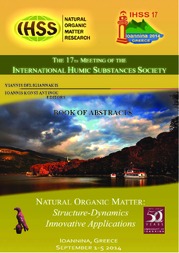Chemical composition of humic acids extracted from soils influenced by ancient charcoal production in Rio de Janeiro - Brazil.
Chemical composition of humic acids extracted from soils influenced by ancient charcoal production in Rio de Janeiro - Brazil.
Author(s): RODRIGUES, A. F.; NOVOTNY, E. H.; OLIVEIRA, R. R.
Summary: During the late nineteenth century, some areas in Rio de Janeiro - Brazil - has undergone remarkable transformation of the forest arising from ancient charcoal activity carried out by ex-slaves. Nowadays, in the area of abandoned ancient kilns, it is possible identify charcoal in the soil. The charcoal weathering, in another anthropic soil, the Terra Preta de Índios (TPI), generated a peculiar soil organic matter, i.e very recalcitrant and with high cation exchange capacity (CEC), resulting in a resilient soil against degradation by intensive use. Thus, the structural comparison, by 13C Nuclear Magnetic Resonance, of the humic acids (HA) from paleo-charcoal kiln and from TPI facilitate to confirm the hypothesis that the natural weathering of charcoal in the soil generate this peculiar organic matter. The result showed that the HA from paleo-charcoal kiln in Rio de Janeiro show similar features from TPI, i.e: policondensed aromatic rings heavily functionalised with carboxylic groups.
Publication year: 2014
Types of publication: Paper in annals and proceedings
Unit: Embrapa Soils
Observation
Some of Embrapa's publications are published as ePub files. To read them, use or download one of the following free software options to your computer or mobile device. Android: Google Play Books; IOS: iBooks; Windows and Linux: Calibre.
Access other publications
Access the Agricultural Research Database (BDPA) to consult Embrapa's full library collection and records.
Visit Embrapa Bookstore to purchase books and other publications sold by Embrapa.

